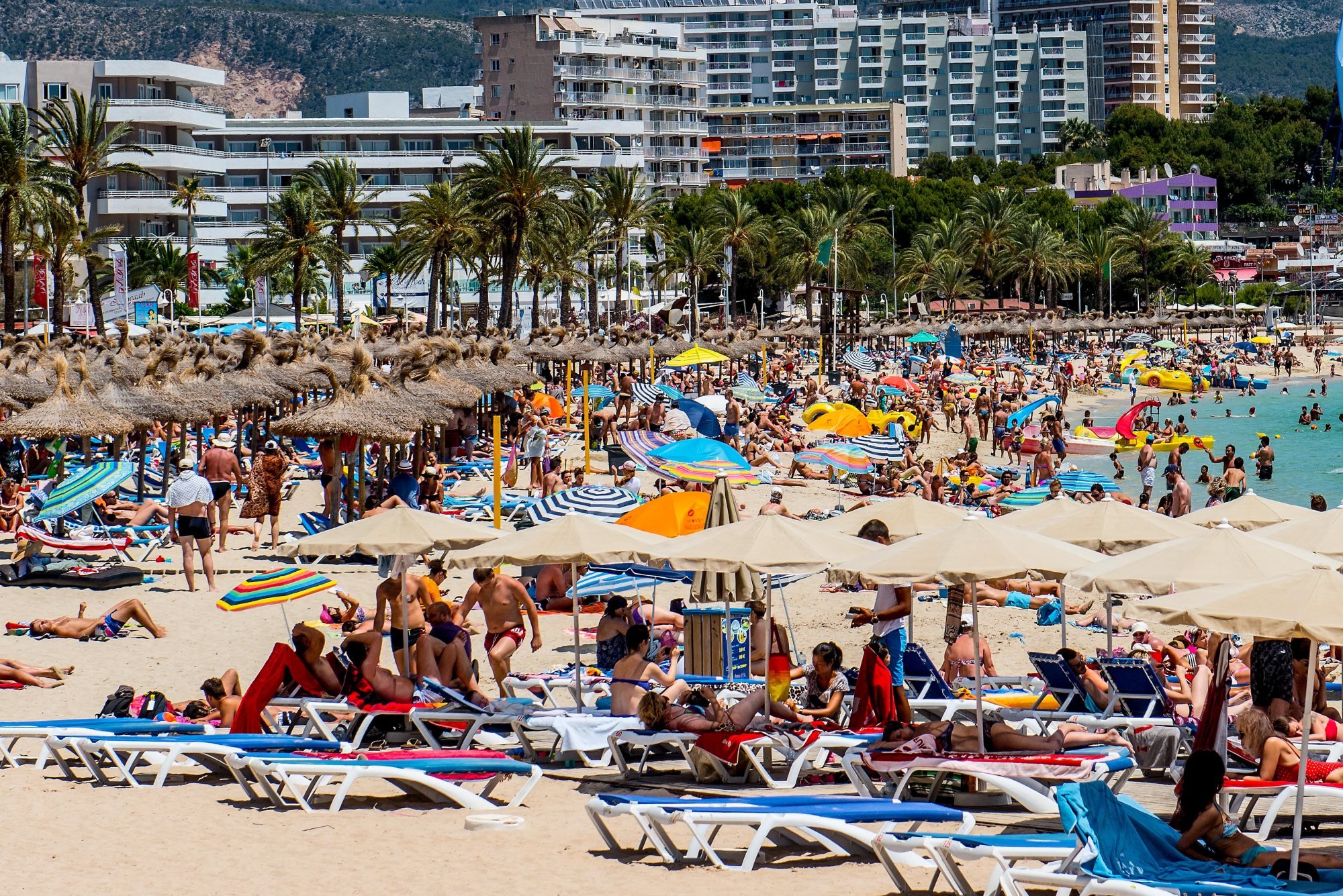How to survive in real estate in Palma, the best city in the world (according to The Times)
In March of this year, the London-based daily newspaper The Times chose Palma as "the best place in the world to live", thus topping its annual list of the 50 favourite places on the planet, ahead of destinations such as Berlin, Toronto, Auckland and Hoi An.

Among the characteristics that led Palma to win, the journalists highlighted the good climate, the quality of life, the beauty of the old town and the fact that it is an accessible city and the gateway to the beautiful, sophisticated and charming island of Mallorca. For all these reasons, The Times considers it to be the best of the small towns in Spain. There you have it, people of the peninsula 😉 😉.

All these compliments have their translation in the real estate market... Mallorca, since the 1950s, has progressively become an eminently tourist destination, converting this activity into its main economic engine. Practically a monoculture. Tourists (nationals and foreigners) initially only came for a stroll, but little by little, and due to the island's advantages, they began to stay for longer periods of time, moved, bought homes, joined the locals and formed families... Today, this trend is more than consolidated and forms part of the island's idiosyncrasy. Yes, we are multicultural (even if we find it hard to recognise).

Of all these tourists who became potential buyers, the national client (understood as the Spanish non-resident on the island) has always been a good buyer. A client basically focussed on the second home market without, in general, great economic pretensions when it comes to setting their purchase ceilings. For many years, he has been our "foreign" client who completes the bulk of the real estate market made up of the local client (generally very focused on standard purchase processes).

But little by little the white blackbird arrived. The solvent foreign client, with a great capacity for investment and susceptible to explode the prices per square metre of the areas with his mere presence. A client who at first was British, then became German (still is: German capital will always be hegemonic on the island) and who has recently turned to the Nordic market (basically Swedish) and to some more exotic curiosities such as the Russian or Chinese markets.
This wealthy foreign buyer initially only focused on coastal areas, luxury urbanisations, huge villas or flats right on the beach or golf links. He rarely invested in the hard core of the city, staying as if very close to it in peripheral urbanisations such as the historic Son Vida. He didn't mix with the locals. He didn't interact. He preferred his ghetto.

This has changed radically. Today the desired area is Palma city, and the jewel in the crown is the Old Town. News such as the The Times This is confirmed, adding fuel to the fire.

Statistically speaking, house prices in the Balearics have risen by 4% on average in the past year. The Old Town operates with a different logic, it belongs to a different league. Here, and in some other premium areas, not only did it not fall during the hard years of the crisis, but it was maintained with conviction and even rose above these indicators.

The market's desire to have assets in these areas means that nowadays we can speak of a shortage of good product in the Old Town area, making the possibility of finding a property in very good condition, well designed, with natural light, terrace, views, lift and parking, a luxury within the reach of only a few (I assure you, a very few). There are few homes like this. And if there are, they are not sold. And if they are sold, you can't buy them (for what they cost, of course).

The new foreign tourist wants to invest in the city centre, wants to mingle with the rest of the citizens, wants to experience first-hand all the good things that the city has to offer. The Times. Wants to interact.
Their presence has triggered the existence of a real estate market dedicated exclusively to them: a multitude of international agencies have landed in the Old Town (I have counted seven in one street) with a staff of agents with a very international profile, polyglots (sometimes with very little command of the local language) and with a portfolio of luxury or high-end properties, with prices only suitable for high-digit current accounts.

This situation generates outdated attention: the agency with an international profile basically becomes a buyer's agency, paying little attention to the owner client, who as a general rule is still local. This is understandable if we take into account that the vast majority of the property portfolio of these agencies is non-exclusive, so they have a multitude of properties with little control and little knowledge about them, and their work becomes a fierce war between competing agencies to place the product before the buyer client.
The international profile agency focuses its business on the demand of the buying client and prioritises the product over the owning client.
These are ways of looking at the profession, but in all honesty this is not our approach. At Monapart Palma we understand this job in a diametrically opposed way. We know that our first customer is the seller. He is the one we work for and the one who pays us. He is the one we want to get to know, to know how he thinks, why he is selling, what his concerns and ambitions are. We want him to explain his home, its corners, its virtues and its defects. In short, we want to pamper them and have full knowledge of the product we are going to work with. We are, therefore, an agency of sellers. And analysing the average of our operations, we are an agency of mainly local sellers. Buyers show up. With a good product, well marketed and at a reasonable price, the buyer client appears, because every property has an ideal buyer, whatever their profile. It simply has to fit.
And this is how we are building our history. With professionalism, empathy and exclusive work, we are able to offer the most beautiful homes in Palma to all those who want to know why we are able to do so. The Times says so many wonders about this city.
Since The Times chose Palma as "the best place in the world to live" we have been able to confirm that the real estate market in Palma has undergone a radical change. The most sought-after areas have changed and have turned the Old Town into the jewel in the crown.





